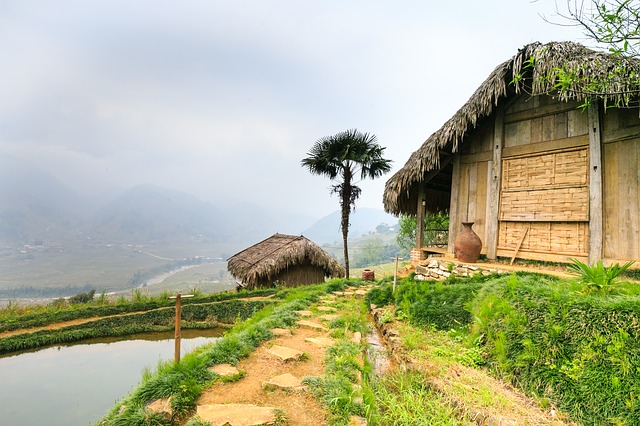Travel is one of the biggest joys and luxuries we have. To explore other places and experience cultures different to ours broadens our horizons, expands the mind, and encourages cross-cultural understanding. In a world that feels increasingly divided, travel unites, as well as helps to sustain livelihoods, support local communities and conserve natural and cultural heritage around the world. Travel is a great thing… but only if it’s done responsibly.
If you are a trusted company working in the travel sector, your customers value what you tell them. Through your approach to creating content, the terminology you use, and the experiences you highlight, you can make a vast impact on reducing harm to the environment or local communities. It can be minor tweaks and subtle suggestions or big, bold campaigns, but the bottom line is the same: if you consider how your words affect the environment, so will your readers. Scroll on to read some of the ways you can promote eco-conscious travel in your content…

Promote ethical hotels
When selecting the hotels you will promote, recommend or choose to work with, do your homework. What is their approach to the environment? Do they employ local staff? You will want to consider (and ask) how they manage their waste and the steps they take to reduce their carbon footprint. Once you’ve selected your hotels, spread the word by making their eco-credentials front of center of your promotional materials. By directing travellers to hotels where the money stays in country, you’re not only helping the environment; you’re helping the local economy too.
Encourage green forms of transport
Air travel is the elephant in the room when it comes to seeing the world. The carbon emissions from one short haul flight are more than a single person’s entire recommended annual amount. If there is another way to get to the destination, then highlight the options. Train travel can bring a wealth of unforgettable experiences and the ability to see the landscape unfurl. If air travel is unavoidable to get to the destination in question, be sure to encourage your readers to use more eco-friendly transport methods once they’re there. Walking tours are the obvious choice, but bicycles, trains, Segways, or even golf carts offer fun alternatives to buses and rental cars.

Discourage tours which promote cruelty to animals
We’re all in agreement that animals should never suffer for our entertainment. Yet travellers don’t always know about the full impacts that their interactions with wildlife can have. As the travel expert, it’s your job to promote sustainable experiences with trusted suppliers where animals and wildlife are not negatively affected by tourism. Instead of suggesting a trip to a marine park which promotes the captivity of whales and dolphins, tell your readers about where they can snorkel in the ocean, or learn to scuba dive, and see the animals in their natural habitat. Instead of encouraging the riding of elephants, highlight an elephant sanctuary.
Highlight cultural immersion
Cultural immersion allows travellers to see the real destinations and to interact with the local people. By producing content which focuses on cultural immersion you are not only giving your clients a more genuine and rewarding travel experience, but are ensuring that the money they spend stays in the country. Suggest fantastic local restaurants where they will be able to sample traditional dishes and recommend genuine experiences where they can see daily life rather than contrived-for-tourism experiences. Both they and the local communities will benefit.

Choose eco-conscious guides
Local guides with a passion and understanding for the local environment are crucial in the safe-guarding of the local environment. Choose the guides and tour companies you work with carefully, and ensure that when creating content you let your readers know that it’s important to you. It will become important to them too. Mention guides and tour companies who safeguard wildlife rather than exploit it, who educate during their tours, and who suggest conservation efforts visitors may be able to get involved with.
Don’t promise the earth
You want your clients to have the best possible travel experiences, and so do travel writers. Yet it’s important to manage their expectations. When we create content – and imagery plays a big role here too – we must take care not to exaggerate or over-hype experiences. When we write about the magic of swimming with manta rays in Indonesia, we put pressure on the local guides to deliver, and more extreme steps are taken to achieve this. Instead we could talk about manta rays alongside the other more commonly sighted marine life, the beautiful corals in the area, and the spectacular scenery. Whether its the chances of snapping certain wildlife, or the likely size of crowds at historic monuments, expectations should be tempered so visitors know what’s actually realistic.
Creating environmentally sensitive travel content is not about overhauling your business; it’s about fine tuning how you get the message across, and understanding the power our words have. By taking a look at what you are promoting, and infusing the content with suggestions and themes, you can make a big difference to the planet.
For more tips for creating impactful content, read some of our other travel writing advice blogs. You can also follow us on Twitter for the latest travel industry news, plenty of travel inspiration and more links to our work.
—
A version of this blog was first published in February 2020 on the World Words website. Read the original article.
